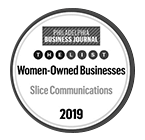How Brand Identity Impacts Your Business
A red bullseye. The golden arches. An emerald green sea goddess encompassed in a circle. The smell of fresh ground coffee and chicken nuggets. A Ronald McDonald playhouse, a one-stop-shop for everything you need, a bustling morning hub for millennials and businessmen alike. How long did it take you to realize I’m talking about Target, McDonald’s, and Starbucks? Did you know it from the first line, or did it take some more context to fit the puzzle pieces together? If it didn’t take you long to figure out the places I’m talking about, that means these companies are on point. Or as we like to call it, “on brand”.
Target, McDonald’s, and Starbucks can be considered three of the most recognizable companies in the United States, and across the globe. Their services are used by millions and have become iconic to our modern-day culture. Aside from their great food and shopping convenience, we’re talking about these large corporations because of their brand identity. A company’s brand and identity can be defined in a multitude of ways, but let’s start with the basics.
Although the terms “branding”, “brand”, and “brand identity” all sound quite similar, they are used in different contexts. According to Deanna deBara from 99designs, “brand” is referred to as the perception of the company as viewed from the eyes of the world — it is the customers’, clients’, and outsiders’ perspective on that company. “Branding” refers to the marketing practice of actively shaping a distinctive brand, and broadcasting this to the world. What we’re focusing on are these companies’ “brand identities”— the collection of all elements that a company creates to portray the right image to its consumers. A company’s brand identity is their core values on display. Visually it is their logos, colors, and typefaces. It is an artistic representation of how they present and express themselves across all platforms. Each company has its own personality, just like your closest friends, which is why you view McDonald’s, Starbucks, and Target very differently.
Understanding a company’s brand identity can help audiences like you determine if you want to use their products and services, and if they are ultimately reliable. But an inconsistent brand identity can cause discomfort and a lack of trust in customers, causing engagement rates to fall behind. Stephanie Cavalier from Envision Creative writes in her blog post A Lack of Brand Identity Will Damage Your Marketing Results that “people enjoy interacting with brands they perceive as being valuable, honest, and superior in quality. In fact, 64% of consumers say that sharing values with a company is the main reason they maintain brand relationships.” Building a good relationship between your brand and your customers can help increase financial, social, and long term success.
Target, Starbucks, and McDonalds are easily recognizable and remembered because of their brand identity and brand values, but how do you use these tactics to help your own business?
It all starts at the core of your company. In order to create a successful brand identity in an ever-changing market, Molly St. Louis, Creative Executive at Inc., suggests you complete these five steps
Conduct a brand audit to determine where you stand in the marketplace, understand who your customer is, how they view your products or services, and how you stand up against your competitors
Identify your company’s core philosophies and beliefs through writing a mission statement and values, and determine your brand value proposition to the consumer market
Develop your brand’s creative elements. This brand identity component is the look and feel of your company, and is represented through colors, fonts, logos and style.
Implement strategies that will help grow the brand overtime, build awareness, and strengthen its reputability.
Be open and ready to analyze and refine your brand overtime. To remain competitive and relevant, your company should develop and change with our evolving world. Just like anything else, embrace the change and make sure your company does too.
These key factors in creating an effective brand identity can be overwhelming at first, but more than anything should inspire you to build your company’s brand to be the best it can be. When your colors, attitudes, logos, values, and philosophies are consistent, your consumer audience will notice and appreciate the safety this structure provides. Above anything else, your brand identity should be authentic and real. When your company’s visual representation aligns with it’s values, you can say that you and your team have exceeded your audiences’ desired “on brand” success.










